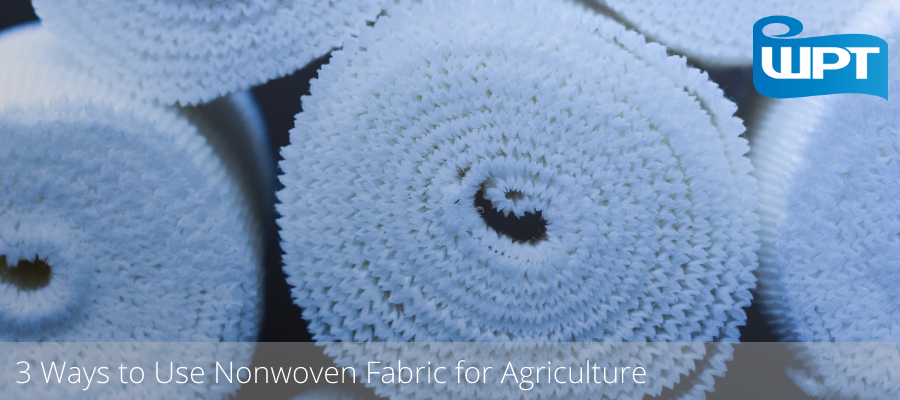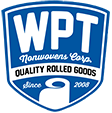
While the agricultural industry isn’t the biggest user of nonwovens, it is nevertheless taking advantage of the technology; in fact, the use of the technology in agriculture is increasing year by year. There are a number of reasons for this. Firstly, more farmers are being made aware of the many cost-effective benefits that nonwoven technology can impart to farming and agriculture.
Secondly, nonwovens are providing alternatives to more traditional ways of doing things, such as providing better protection for crops from the sun, especially during dry seasons. Thirdly, people are coming up with ways to use nonwovens in different settings, including agriculture.
There are many reasons why nonwovens are ideally suited for agricultural uses. They can, for example, help improve productivity and efficiency in managing greenhouses, increasing crop yield, estimating labor needs, and, possibly, reducing the need for pesticides.
What is great about nonwovens is that they are generally not one-size-fits-all, pre-made, come-in-uniform-bundles products—instead, they are state-of-the-art, custom-fit, and specifically tailored to tackle one job or need type of product. Most people have to go shopping to see what products fit their needs; when it comes to nonwovens, though, it’s the other way around.
The agricultural industry finds a need or thinks of a way to address a problem and then they ask the nonwoven industry to tailor-make something that will adequately address that need cost-effectively. In most instances, those needs have been met or continue to be met as the industry finds new ways to use nonwoven technology.
In some cases, the nonwoven industry has proposed a solution that the agricultural industry accepted and ultimately put to good use.
WHY ARE NONWOVENS GOOD FOR AGRICULTURAL USES?
Some of the characteristics that make nonwovens very useful, if not indispensable, for the agricultural industry include:
- Heat control and sealability
- Hydrophilic and hydrophobic capacity
- Can be excellent covering material with graduated-to-need air permeability
- Moisture absorption, in the amount/percentage needed
- Good light transmittance (especially useful for greenhouses and other ways)
- 2% to 3% UV protection capability
- Suppression of weed growth without the use of dangerous chemicals
- Photo synthesis enhancement or reduction, as needed
- Helping to keep heat lower to the ground; helping to increase or decrease ground temperature, as needed
- Helping to avoid damage to fruit and root by managing air permeability properly
- Biodegradable materials
- Helping to enhance the effects of fertilizers; preventing loss thereof
- Helping to reduce disease possibilities, such as by not allowing too much water to accumulate
- Helping to manage pest problems and, thus, reducing crop losses
- Helping to keep the soil moist and loose
- Helping to reduce need for irrigation (probably one of the biggest costs for agriculture)
THE USE OF NONWOVENS FOR GREENHOUSES
Not surprisingly, nonwovens can be useful tools in the making and running of successful greenhouses. Many people think that greenhouses are self-managed farming tools that have fewer problems than traditional ways of growing things on open soil. That is simply not true.
Greenhouses have their limitations and their shortcomings, just like open soil growing does. For instance, heat in greenhouses can quickly accumulate to the point of creating an oven-like setting that will quickly kill everything growing in it. For that reason, heat inside greenhouses has to be managed expertly. The same goes for moisture.
Fortunately, you don’t have to introduce moisture into greenhouses as well as you do to open soil. But if the moisture builds up too much, then the roots can develop disease and attract things like mold. The good news, however, is that nonwomen fabrics can help manage both heat and moisture inside greenhouses, thus providing a healthy environment for the plants inside.
Nonwoven fabrics can provide good air and water permeability, in addition to helping manage heat. These materials are light, easy to transport and can be custom-made to fit just right and provide just the right types of services.
THE USE OF NONWOVENS AS WATER CONTROLLING TOOLS FOR SEEDLINGS & EARLY-STAGE CROPS
One creative use of nonwovens is to use them as a means to control water retention and collection for growing crops, especially in the seedling, early-growth stages. This application would require using sheets of hydrophobic nonwoven subjected somewhat to hydrophilic treatments that included the application of a surfactant to a section of the hydrophobic nonwoven fabric.
One of the goals of this idea is to see to it that the hydrophilic treatment then creates channels which allow water to progress without too much inhibition from the nonwoven’s obverse surface to its underside. In theory, water retention is kept to a manageable level, thus preventing any damage to the crop from the weight thereof.
Nonwoven fabrics made from polyethylene terephthalate or polypropylene are already useful in agricultural settings because of their excellent heat retaining properties, not to mention their good permeability. The problem with these materials, though, is that since they contain lots of hydrophobic resins they tend to allow water to collect on surfaces since it can’t pass through too easily.
The danger is created, therefore, of water accumulating to the point of crushing crops; this happens, of course, only if the water is allowed to collect on nonwoven fabrics covering such crops. This problem, however, can be overcome by following the process already described.
The point is that water is then allowed to pass through at such rate as to make accumulation unlikely. By using creative techniques like this, nonwovens can be made to overcome any deficiencies they may have, and this is possible because these fabrics can conform and adapt more easily than other substances and materials known to man.
CONCLUSION
The agricultural industry is in trouble, not just in the US but all over the world. Many things are happening that are changing the playing field for farmers. Simply put, growing most crops, especially foods, isn’t profitable anymore. It takes huge amounts of money to grow crops en masse. And the obstacles keep getting more numerous and worse in intensity every year. Soils is being over-planted and over-harvested.
Less and less land is being made available for growing things, instead giving rise to more apartment complexes and shopping malls. Insects, at times controlled by pesticides, are getting more desperate to find food and are more aggressive than even in destroying crops. Weather and climate changes are also hurting the picture.
These days, farmers need all the help they can get. Although nonwovens may not provide solutions to all their problems, they can nevertheless help to put some dents in some of them. Just as nonwovens have saved the medical industry (by providing cost-effective ways to protect everyone from dangerous microorganisms), maybe they can also help save the agricultural industry.
Actually, it will take more than some efficient products like nonwovens to do that but, if we could address all problems with such quality and dependability as nonwovens provide, maybe we would do a better job of addressing other huge problems confronting humanity?

